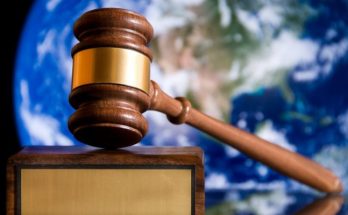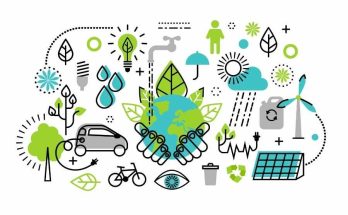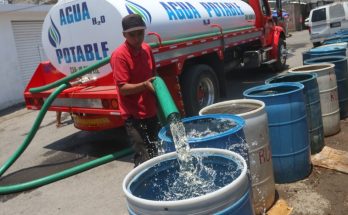By Alejandro Angulo
Data come and go regarding the forecasts of rain for this year and drought conditions, but the one thing that is certain is uncertainty. These days, it’s impossible to describe what’s happening with weather.
Let’s start first with—what is drought? In general, it’s a prolonged period of less precipitation than average (meteorological drought). This drought usually precedes other forms of drought such as agricultural drought and ecological drought of a biogeographic area. This means that drought is a transitory anomaly that is characterized by temporary water shortages in a period where rainfall is scarce or the natural flows of rivers or dammed volumes are below normal. Consequently, the amount of water is not enough to supply the demand of living species (vegetables, animals, and inhabitants) of the affected region. However, when rainfall deficiencies are cumulative and extend over months or years, then we enter a drought. The Mexican Water Institute says that droughts are inevitable, unpredictable, and without an established trajectory. They also lack a well-defined beginning or end, they are recurring, but not cyclical, and they are potentially catastrophic. These have impacts classified as agricultural, hydrological, meteorological, and socioeconomic.
Also, due to their nature, droughts cause slow-progressing disasters. This makes it difficult to monitor their progress and quantify their impact. According to its intensity, the classification is: D0: Abnormally dry; D1: Moderate drought; D2: Severe drought; D3: Extreme drought; and D4: Exceptional drought.
The causes of a drought involve natural and anthropogenic factors. The main cause of any drought is the scarcity of rainfall (meteorological drought). This results in insufficient necessary water resources (hydrological drought) to supply the existing demand. The causes of drought can be grouped into natural origins, which are represented by changes in atmospheric circulation patterns; variations in solar activity; and interaction phenomena between the ocean and the atmosphere. The second cause is anthropogenic origins due to global warming and is attributed to a certain extent to human activities. These include the burning of fossil fuels, environmental degradation (deforestation, soil degradation, and desertification), and the alteration of natural ecological systems.
According to the Drought Monitor, the municipality of Querétaro is in a moderate drought, which indicates there is a meteorological drought that occurs when there is a continuous shortage of rainfall. This is related to the behavior of the ocean-atmosphere system, which is influenced by both natural and anthropogenic factors. Meteorological drought is linked to a specific region since atmospheric conditions are highly variable from one region to another.
According to the latest data released on the levels of the large bodies of water, we can establish there is also a hydrological drought that is generated when the water courses or the volumes dammed are below normal during a given time period. It can take months or years from the beginning of the rainfall shortage, or it may not occur if the rains return shortly after. But there is also an agricultural drought given the lack of moisture in the root zone necessary for crops. It is not possible to establish agricultural drought thresholds because the amount of water differs for each crop.
What has not yet occurred is a socioeconomic drought, which refers to the impact of water scarcity on people and economic activities. Increasing human activity makes the incidence of socioeconomic drought greater—highlighting growing economic losses. Finally, there are both direct and indirect consequences. Directly, there are economic impacts on agriculture and livestock, water management and supply, industry, and hydroelectric power generation. There are environmental impacts to water, soil, air, living organisms, and protected natural spaces. Also, there is an impact of pollution and an increase in forest fires. Indirect consequences deal with the economy (hydroelectric power generation, trade, and financial affairs) as well as social impacts (public health, unemployment, politics, and foreign affairs), and leisure and tourism.
There is a difference between drought, aridity, and scarcity. Aridity is a natural structural situation of a region and, therefore, permanent with very low annual or seasonal rainfall. Scarcity is a permanent situation of water decrease with reference to the demand in a water supply system or in a large region (hydrological drought). This is characterized by arid climate and/or rapid growth of water consumption, although recent studies show feedback from the earth’s atmosphere that will further intensify the simultaneous drying of the soil and atmospheric aridity in a warmer climate. Previous studies have looked at how atmospheric and oceanic processes drive climate extremes, especially in the setting of concurrent extremes that can be highly destructive.
There are two main stressors. One is soil dryness represented by very low soil moisture. The second is atmospheric aridity, represented by a very high vapor pressure deficit, resulting in a combination of high temperature and low atmospheric humidity. This drives widespread vegetation mortality and reduces terrestrial carbon uptake. The future intensification of the simultaneous drying of the soil and atmospheric aridity would be disastrous for ecosystems and would greatly affect all aspects of our lives.
We are experiencing a condition of overlapping phenomena. The concurrent drought and aridity have a stronger impact on the carbon cycle. We are at a critical point in climatic terms since the municipality estimates that most carbon sequestration occurs in soils and not in vegetation.
Scientists believe that it is essential to quantify and evaluate the representation of these processes in climate models. Soil moisture variability and associated feedback will be crucial in providing some models. These are the frequency, duration, and intensity of composite drought and aridity events and their changes in a warmer climate. This will help mitigate future risks associated with these events and climate change.




